Cardamine hirsuta
Prolific European cardamine found along roadsides and fields
Cardamine hirsuta hairy bittercress
This is one of the earliest blooming plants in this area because it is a “winter annual”. This means that the seeds germinate in the fall and grow into a rosette of leaves close to the ground. It survives as a green plant over the winter and is thus can put up a flower stalk as soon as weather permits. These flowers are small and white and borne on a wiry green stem. These stems may also bear small compound leaves. Like most members of the mustard family the flowers have four petals. Often, especially in early growth states, these flowers seem to be partially closed.
There are several species of plants in this area that are types of cress. Any cress is a kind of plant in the mustard family that usually has small white flowers and pungent leaves. This species is common in Pennsylvania and all of North America but is a native of Europe and North Africa.
Small butterflies and other insects are attracted to the flowers of the hairy bittercress and serve as pollinators. The flowers persist for about a month and then fruit is produced in the form of vertical seedpods that are up to one inch long. Even when the first pods are forming, the plant may continue to generate new flowers. When the pods are touched the seeds will often burst out in an explosive manner. This adaptation helps distribute the seeds.
The leaves of hairy bittercress are compound with one terminal leaflet and other leaflets in pairs. The margins of the leaflets are a bit wavy. The basal rosette may be up to 8 inches across, but the size varies with the fertility of the soil. The leaf petioles have a few long hairs along their margins, giving the plant its common name. These are not easily seen unless you pull a leaf from the rosette and use some magnification. The best growing conditions are in damp soil that has been disturbed. Thus it is common along roadsides. This species can be an invasive plant in lawns, gardens and nurseries and is difficult to eradicate once it becomes established.
In old English literature, it is one of nine herbs mentioned in the “Nine Herb Charm”, a concoction designed to be an antidote for poisons and infections. It is also edible as a bitter herb in salads.
The species, like many other common plants, has many local common names. These include lamb’s cress, land cress, hoary bitter cress, spring cress, flick weed or shot weed.
Habitat & Range
Fields, meadows, roadsides, open grounds.
Present throughout the state.
| EMP: | FACU |
|---|---|
| NCNE: | FACU |
Phenology
Flowers March through April.
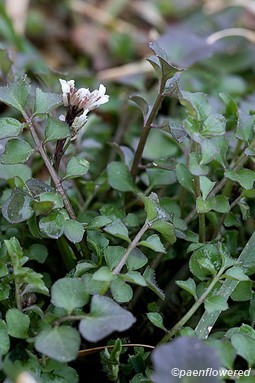
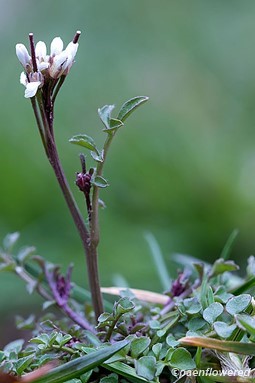
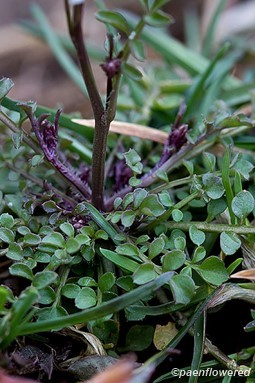
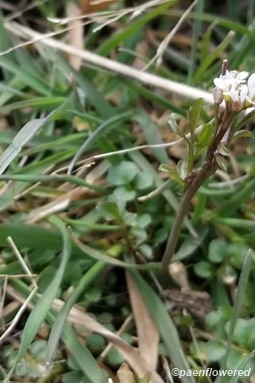
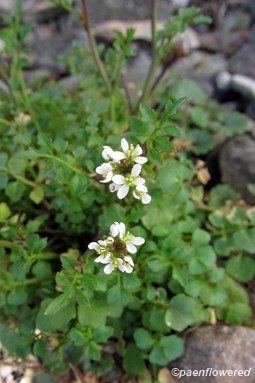
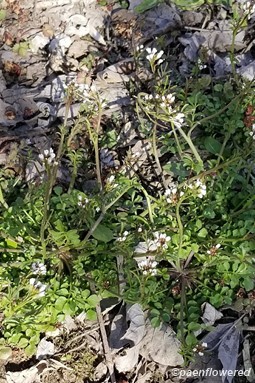
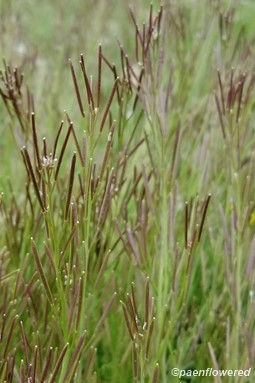










Comments
Have you spotted this plant in your area? We'd love to hear about your experience! Share your comments or questions about the plant below. Comments are moderated before posting.